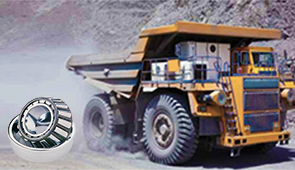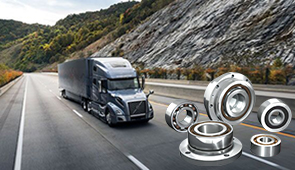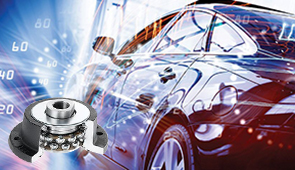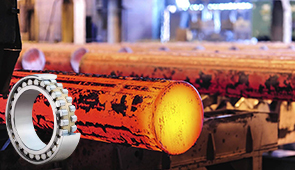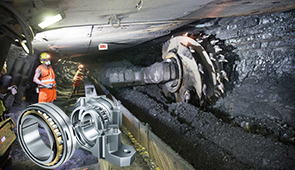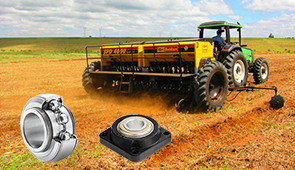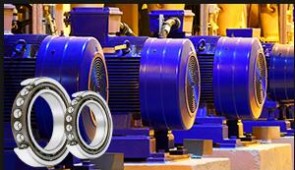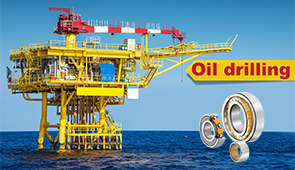How Do I Know If My Wheel Bearing Is Bad? Signs and Symptoms of a Bad Wheel Bearing
The smooth, quiet ride is usually taken for granted by the vehicle driver. Behind a sleek exterior are a myriad of components working in complete harmony, wheel bearings being among them. These smallish but critical parts in the building of the entire system ensure that your vehicle is working safely. But what happens once your wheel bearing starts to fail? At first, the signs may prove subtle, but inattention could lead to great consequences, from costly repairs to safety risks. In this article, we shall run you through most of the signs and symptoms of bad wheel bearings so that you can recognize the issues in good time and drive safely. So fasten your seatbelt as we unwrap what you need to know to keep your car performing at its best.
Understanding Wheel Bearings
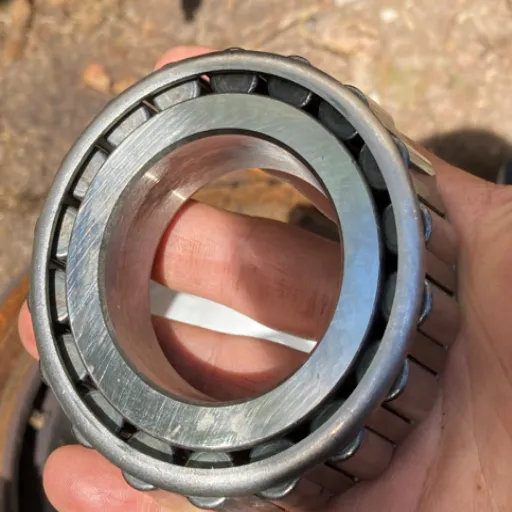
What Are Wheel Bearings?
Wheel bearings are essential parts of a vehicle’s wheel assembly for smooth rotation with minimal friction. They contain tiny steel balls or rollers inside a metal ring, especially designed to carry the weight of the vehicle while permitting the smooth movement of the wheels.
These bearings are present inside the hub of each wheel, binding the wheel to the axle. They allow the free rotation of the wheel with minimum wear due to road friction. Without the wheel bearings running well, the wheels will not work appropriately, thus compromising vehicle performance and safety.
Good wheel bearings are made to take the pressure and withstand the harsh driving conditions. By design, they are sealed in order to prevent water, dirt, or other contaminants from causing premature failure. A timely service and inspection can provide you with the benefits of longer life and prevention of any trouble that could hamper your driving experience.
How Wheel Bearings Function
Wheel bearings are a critical component of the vehicle’s wheel assembly, allowing the wheels to rotate with minimum friction. These bearings are designed to bear the weight of the vehicle and keep the wheels in alignment while the vehicle is moving. Less friction means easy turning of the wheels, thus higher performance and stability for the vehicle.
Wheel bearings are housed inside the wheel hub-a mechanism connecting the wheel to the axle. Hence while the vehicle is on the go, these bearings help the wheel in proper rotation by presenting a smooth surface on which the wheel can turn. They should be made from the best materials and must be precisely engineered because the bearings have to withstand huge pressure, temperature, and wear and tear from normal driving.
To operate correctly, wheel bearings need their utmost lubrication with friction and wear protection in place. More modern wheel bearings have sealing and pre-lubrication, hence never requiring frequent maintenance. However, regular inspection is essential to ensure that no damage or contamination would hamper performance. Well-maintained walking bearings make for a safer driving experience with smooth ride quality and thus are indispensable to every vehicle.
Importance of Wheel Bearings in Vehicle Safety
Wheel bearings are such components whose very safety and performance depend. They are built to bear the weight of a vehicle and facilitate very smooth rotation of wheels with a little friction. If wheel bearings cannot perform their function well, the vehicle handling, stability, and braking system would be heavily affected, and with that, a higher propensity toward accidents would exist.
One of the most critical safety aspects these provide is maintaining the wheels’ correct alignment and balance. Worn or damaged wheel bearings result in uneven tire wear, pulling to one side, and overall deterioration of vehicle control. These conditions could seriously undermine a driver’s ability to maneuver safely, particularly at high speeds or during emergency maneuvers.
In addition to a bad wheel bearing creating heat and vibration, it may damage other parts with a potential for more damage, such as the axle or braking system. Wheel bearing failure can be avoided by early detection during a simple vehicle instead of complex inspections. Timely repair or replacement of wheel bearings will make driving safer and smoother and lessen mechanical breakdowns and accidents.
Common Symptoms of a Bad Wheel Bearing
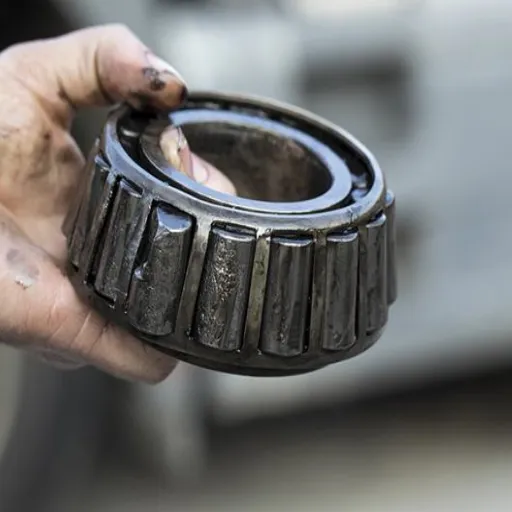
Unusual Noises: Humming and Grinding Sounds
Any strange or unusual noise from the wheels is a clear sign of a faulty bearing. The humming noise is a result of the bearing inside wearing unevenly or from internal bearing damage, while the grinding noise indicates a more severe damage as the metal faces start rubbing against each other. The noise level will increase with the rise in speed and may either increase or decrease and change its pitch while making a turn-the changes will depend on which wheel bearing is wxffected. If such noises are ignored, they can bring about severe mechanical failures endangering the safety of the vehicle itself.
Such sounds usually become audible if you hold steady speed but resulting as well during acceleration or a process of slow moving down. Turning will also cause variations and amplification of the sound, and this signifies an increased load on one side of the wheel bearing, making the problem more painful. Ignoring these early signs could lead to the bearing locking up, which could then set one up for expensive repairs and even unsafe driving conditions. The problem can set in when identified through periodic checks or hearing these noises during your normal maintenance routines.
Any change in the noise inside the vehicle must be immediately noticed by the vehicle owners, and thereafter, they should take it ahead for inspection to a professional mechanic. With modern diagnostic equipment pinpointing a wheel bearing problem today is fairly straightforward; however, early intervention is still best. Keeping track of maintenance and addressing minor anomalies as soon as they appear can save considerable downtime and money and, more importantly, ensure a safe driving experience for all. Always employ the highest quality type of replacement bearing, and adhere to the manufacturer’s recommendations so as not to cause premature wear and to retain long-term reliability.
Steering Issues: Looseness and Vibration
Being things like looseness and vibration in the steering wheel must indicate the nearby steering and suspension problems within a vehicle. Steering-wheel looseness points toward worn parts-the tie rod ends or ball joints or even the steering rack. These are parts that wear out over time due to normal wearing factors causing the steering system to feel imprecise or unresponsive. Vibration issues usually arise from wheel imbalances or misalignments, or uneven tire wear. Both these factors greatly compromise the safety and the performance of a vehicle and hence should never be overlooked.
The diagnosis of looseness in the steering or vibrations requires a systematic approach. Typically, a technician will first check the tires and wheels for physical damage, alignment, or air pressure issues. If no issues are found, usually the suspension would be inspected next for worn or damaged components. Vibrations at higher speed levels are usually due to wheel balancing issues, while vibrations at low speeds more often point toward bent wheels or low-quality tires. Today, modern diagnostic tools allow any willing mechanic to quickly identify the problem by analyzing data captured by onboard sensors and vehicle systems.
To remedy and prevent these occurrences, maintenance and awareness remain top priority. Drivers should look for any sudden changes in steering behavior, vibrations while driving, or unusual noises emanating from the front end. Maintenance alignments on wheels, tire pressure checks, and timely action on suspension wear can suppress the onset of steering issues. When keeping up with such tasks, a driver stays safe and extends the life cycle of key components in the steering and suspension field, thus reducing the repair costs in the end.
Tire Wear Patterns Indicating Bearing Problems
Here is the common indication of abnormal tire wear: it points to potential issues in a vehicle’s wheel bearings. When the wheel bearings are degenerated or damaged, uneven rotation occurs in the wheels, causing uneven stress to be exerted on the tires. The irregularities caused by abnormal tire wear would invariably lead to cupping, feathering, or other kinds of uneven tread wear patterns at the edges of the tire. For example, cupping-a strange wavy or scalloped pattern on the tread-might be indicating that the bearings can no longer hold the wheel assembly tightly, allowing vibrations to travel excessively through the suspension system and wear the tires unevenly.
One-sided or edge wear is another major indicator of bearing-related wear on tires. A damaged wheel bearing may misalign the wheel, thereby tilting the tire inward or outward. This leaning causes one side of the tire to wear down faster. Drivers may perceive a sharp decrease in the lifespan of the tires and reduced comfort in driving. Other accompanying factors are abnormal sounds like grinding and humming, which vary in pitch with speed, indicating bearing problems as well.
Tire damage resulting from faulty bearings can be far more severe if not addressed promptly. Technicians check for play or looseness within the wheel assembly; improper alignment, balance, or uneven tire wear is a good sign of questionable bearing condition. Fixing minor bearing problems at an early stage prevents costly repairs and prolongs the life of your tires while enhancing road safety. Being proactive in maintenance will certainly contribute toward a smoother and safer driving experience.
Diagnosing a Failing Wheel Bearing
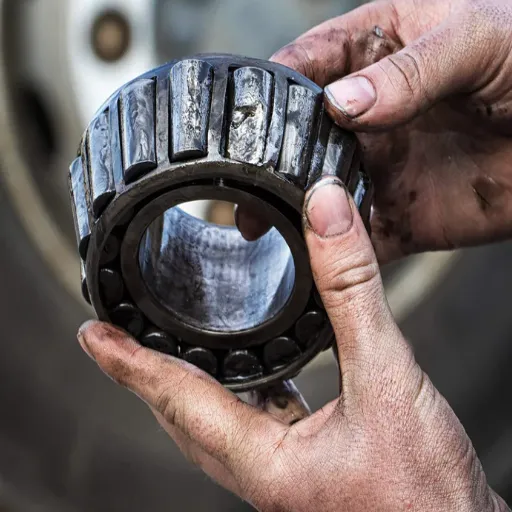
Step-by-Step Guide to Check for a Bad Wheel Bearing
- Unusual Noise Recognition:Drive through various speeds, attentively listening for humming, growling, or grinding noises from the wheels. These sounds become distinct with a fading or increasing pitch as the speeds change in the failing wheel bearing.
- Visual Inspection: Park the car on a level road and inspect the area around the wheels. Look for indications of rust leakage of grease, or physical damage around the hub assembly that gives away the presence of a bearing problem.
- Check for Wheel Play: With great precaution, raise the vehicle with a jack and secure it with stands. Hold the wheel at the 12 and 6 o’clock positions and attempt to move it backward and forward. If too much movement or play is observed, it might be a worn bearing.
- Spin the Wheel by Hand: Rotate the wheel by hand and feel for roughness, grinding, or resistance. Free rotation indicates bearings are probably OK, whereas any increased resistance or strange noise suggests the bearing has worn.
- Keep an Eye on Alignment of the Vehicle: Driving with a failed wheel bearing misaligns the wheels, causing uneven tire wear or pulling to one side. Check for any visible tire wear patterns, and sense whether the steering goes off-center when driving on a straight road.
- Consulting an Expert Technician: If you cannot confirm or identify the problem, it is highly advisable to visit a professional mechanic or technician. With the help of advanced diagnostic tools, such as a chassis ear, they will be able to identify the exact cause of your problem and have it correctly repaired.
These steps can improve the safety and performance of your car as well as avoid costly long-term repairs if followed with due diligence and prompt attention toward fixing the issues identified.
How to Identify the Source of Noise
A systematic approach-and-an-attention-to-detail will help you identify the source of the noise in your vehicle. Write down when the noise occurs, e.g., while braking, accelerating, turning, or driving at certain speeds. By doing so, you limit the number of possibilities for the cause. For instance, squealing on braking could mean worn brake pads, while clicking noises during a sharp turn might be a sign of problems with the CV joint.
Next, check things visually. For instance, are there any obvious signs that could indicate a loose, broken, or damaged part in the suspension, exhaust system, or engine bay? Unsafe simulation of the noise with the suspected driving conditions can provide clues to the cause; an empty parking lot is a good way to do this safely.
Using advanced tools like chassis ears or in-stethoscopes can take the detection further in case the problem considered persists. These devices help to amplify noises emanated from specific components so that troublesome defects which are not so obvious by visual appraisal can be ascertained and appropriately fixed.
Professional Tools for Diagnosing Wheel Bearings
Diagnosing wheel bearing problems with good accuracy would require the use of professional tools and knowledge. Amongst the tools is a chassis ear that is constructed such that it can pick up the usual bites of sounds coming from components of the vehicle’s suspension and wheel assembly. By positioning the sensors at different points in the suspension, the mechanic would be able to pick out the one spot where the noise is coming from to figure out if it is coming from the bearing or some other nearby component. This tool is very efficient especially when the defective bearing is giving away some very subtle or intermittent noises that are difficult to identify.
Another very important diagnostic tool is a thermal imaging camera camera. These cameras register minor deviations in temperature caused by friction or excessive wear. Heat is generated in a faulty wheel bearing more than in a good bearing. Scanning around the wheel hubs will expose bearing damage as hot spots to the technician. Thermal imaging offers precision and remains non-invasive, so it can help confirm a suspected problem before going through the trouble of taking all the components apart.
Likewise, when truly useful, modern-day digital stethoscopes can bring great precision to pinpointing problems. They amplify vibrations and noises so mechanics can really start to assess the sound signatures of faulty wheel bearings. Together with test drives and visual inspections, these offer a complete methodology for diagnosing wheel bearing failures. The advanced technologies really give them the scope to pick even the slightest of problems, thus ensuring that these can be rectified for the sake of vehicle safety and to save them from turning into more severe ones.
Causes of Wheel Bearing Failure
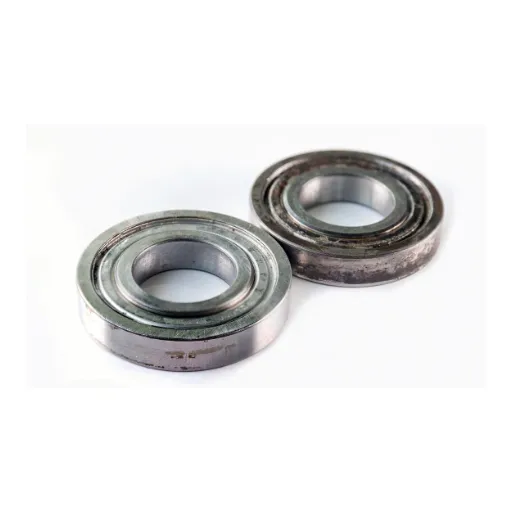
Common Causes and Risk Factors
Wheel bearing failure can arise from many situations, most of which are avoidable with proper maintenance. One of the main reasons is poor lubrication. Bearings need good lubrication to reduce friction and heat; when the grease breaks down or there is none, wear sets in quickly. The other main cause is contamination, usually dirt, water, or road debris getting into the bearing assembly. This contamination then progressively causes corrosion and damage to the components.
Another danger to the load-bearing wheel increasing stress and causing early failure is overloading or frequent overloading. Bad roads and potholes cause a series of impact stresses to damage them further, while bad installation can lead to the whole bearing becoming misaligned or damaged if anything is forced on against manufacturer’s instructions.
Eventually, natural wear over time is inevitable, as wheel bearings undergo infinite cycles of use. Regular inspections and preventive measures go a long way in minimising these defects-that is, to keep the wheel bearings in optimum condition so that they do not put vehicle safety at risk.
The Impact of Poor Maintenance on Wheel Bearings
Maintenance is never thought important for a wheel bearing. It can cause many problems that affect a vehicle’s performance and safety. Improper maintenance leads to frantic wear-and-tear and untimely failures that are directly detrimental to the functioning of some critical systems. Here, therefore, are some major things that will happen when wheel bearing maintenance is neglected:
- Premature Wear and Tear: Poor lubrication and servicing can cause friction and heat buildup in wheel bearings, thus degrading the parts faster than expected.
- Excessive Noise: Bad bearings often emit grinding, humming, or rumbling noises during turning or acceleration, all indication that something is inside breaking down.
- Losing Stability in the Vehicle: A damaged wheel bearing induces uneven wheel movement with vibrations that reduce control on the steering, especially on fast-moving occasions.
- Tire Wear Imbalance: The wheel bearings can cause uneven wear on the tires, shortening their life span and hence, raising replacement costs in case they are misaligned or damaged.
- Potential for Complete Failure: In the event that the problem is ignored for too long, wheel bearings will become entirely stiff and will complete the lock-up of the wheels or detachment, which is extremely massive safety risk for the driver and every other person on the road.
Thus, making sure the wheel bearings are inspected and lubricated regularly and replaced at the right time will guarantee against these problems and keep wheel bearings in great condition.
Environmental Factors Contributing to Bearing Wear
Several environmental variables lead to massive wear and tear of wheel bearings. Exposure to water and moisture is one major environmental villain. Therefore, water brought into bearings while driving through flood-laden areas or in heavy downpour may dilute their lubricant and induce corrosion. Road salt sprinkled on the roads to combat ice will worsen rusting further leading to the decline of bearings with time.
In addition, dirt, dust, and debris may act. Such particles can infiltrate the wheel bearings, more so when the seals are compromised, thereby increasing friction and wear. Bearing performance will also be affected by high temperatures since prolonged exposure to heat may break down the lubricants into ineffective substances.
Last but not least: Driving conditions. For example, a very uneven surface exerts additional stress on the wheel bearings, and worse yet, frequent high-speed driving or overloading of the vehicle intensifies bearing wear. Awareness of these environmental factors and their mitigation through suitable maintenance should help preserve bearing life and sustain the overall safety of the vehicle.
Recommended Actions for Addressing Bad Wheel Bearings
When to Seek Professional Help
Generally, while deferred repairs or DIY fixes might be tempting for small issues, the wheel bearings simply cannot fall into that category. If I begin hearing the grinding or humming sounds from one wheel, notice uneven tire wear, or feel vibrations in the steering wheel, I know it is time to call upon an expert. Such noises and feelings could mean that the condition of the wheel bearings deteriorated beyond the point at which they do compromise the safety and performance of my vehicle.
At the same time, not feeling confident about diagnosing or replacing wheel bearings will send me straight to the mechanic. It basically takes expertise and tools to check, remove, and replace wheel bearings, and when done wrong it could lead to further damage or pose major safety risks once the bearings fail while I drive.
Whenever there are any signs of automobile trouble, I make it a priority to schedule an appointment with a trusted professional Subaru mechanic. Sometimes I feel uneasy thinking that I have to wait for days or weeks without being able to use my vehicle, fearing it could break down anyway. However, I feel better if I know the issue is taken care of right away and that my vehicle is now running fine, safe, and reliably.
DIY Solutions for Minor Issues
If the issue involved is minor, the owner can just go ahead and handle it in order to economize time and money-if safety is not compromised in the process. This is among the more common DIY repairs-A dead battery. When carrying out the jump-start procedure with the jumper cables and a working car, the process is quite straightforward for most. Wirebrush that corrosion away or to prevent iron-terminals to build up a good connection in the first place. Clean up with a chemical agent composed of baking soda and water, followed by scrubbing the buildup safely.
And just as well, windshield wipers can be replaced. Wiper blades lose efficacy because of wear and tear caused by climatic conditions. They are usually easy to replace since no special tools are needed. Most manufacturers make use of clip systems for wiper blade installation that are quite easy to insert into the wiper arm. Be sure to purchase the wiper blades of the correct size for your specific make and model because if the blade is too big or too small, it can cause unnatural wiping or even damage the windshield.
Being able to check for essential fluids like coolant, engine oil, and windshield washer fluid is a handy skill for any car owner. Keep a clean funnel and gloves nearby for mess-free work. To check engine oil levels, ensure the vehicle is on a level surface while the engine is cool, then use the dipstick to check for oil levels. Have proper fluid levels for your car because it will prevent bigger mechanical problems and ensure your vehicle runs smoothly and lasts longer. For more serious or unclear issues, however, consider taking your vehicle to a professional.
Preventive Measures to Extend Wheel Bearing Life
Wheel bearings are essential in wheel rotation and smooth vehicle operation. To have maximum life, bearings must be regularly inspected and maintained. It is a common preventive measure to balance and align the wheels properly, whereas alpine wearer would undue stresses on the bearing causing its premature wear. Similarly, maintaining the correct tire pressure distributes forces evenly relieving stress off the bearing. Check your owner manual for maintenance intervals and procedures as recommended by manufacturers for your specific vehicle.
This very crucial factor for extending the wheel bearing life is to prevent contamination. Dirt and water or just some other debris entering the bearing assembly will destroy the lubricant and may cause corrosion or mechanical damage. The seals around the wheel bearings should be regularly checked for their integrity and free from damage. If the inspection reveals a breach in any of the seals, then replacement should be carried out immediately in order to prevent contamination from entering the bearing housing. In off-road or muddy conditions, consider cleaning around the wheel hubs as much as possible to prevent buildup from threatening the system.
Using high-quality lubricants is the only way to ensure the wheel bearings get maintained efficiently over a long period. If grease repacking of the wheel bearings is required as per the vehicle specification, one should use manufacturer-recommended lubricants, preferably those developed for high-performance wheel hubs. With high loads or unfavorable driving conditions, the intervals between each lubrication or seal replacement are to be shortened. Forgetting to pay attention to any strange noises while driving, such as grinding or humming, will only make matters worse. It is far better to handle these issues early on by consulting a mechanic, saving you from costly repairs and allowing your vehicle to operate smoothly. Constant vigilance and follow-through will go a long way in making the wheel bearing more dependable and long-lived.
Frequently Asked Questions (FAQ)
Q: What happens to signify the bad wheel bearing?
A: Some of these signs include rumbling noise by the side of the wheel, especially when driving at higher speeds. Another word for a grinding noise when the wheels are turned is older wheel bearing.
Q: How do I realize when my wheel bearing is to be replaced?
A: Symptoms for wheel bearing to fail include a howl or growl that increases in speed. These symptoms should make you consider a checkup. Vibrations in the steering wheel on the road are also a hint telling you that the wheel bearing set might be due for replacement.
Q: Can I check my wheel bearings?
A: Yes, you can do some preliminary checking. Raise the vehicle and try moving the wheel freely. Any play or roughness in movement will tell you Wheel bearings can wear and should be attended to.
Q: What kind of noise would you hear from a bad wheel bearing?
A: It is just common to associate grinding, humming noise with a bad wheel bearing coming from your wheel. The noise may become continuous and louder with speed, especially at around 40 mph, or when turning the vehicle.
Q: Do any warning lights come on in the presence of wheel bearings?
A: There are no warning lights specific to the wheel bearings. However, in case your vehicle is equipped with ABS, then the warning light may come on to indicate issues with suspension and steering that may, in turn, affect the wheel bearings. Always scan the dashboard for any alerts.
Q: What are some signs that a wheel bearing is going bad as you are driving?
A: Some of the signs that a wheel bearing is going bad during driving include strange noise, vibrations on the steering wheel, and a feeling of looseness in the wheel area. Another sign that you should investigate the problem is an audible grinding or rumbling noise that changes by speed of the vehicle.
Q: How does one know a bad bearing while turning?
A: When you turn the wheel, if you hear grinding or any other noise change, then it is likely that the wheel bearing is going faulty. Such a noise can be louder when taking a turn in either direction, marking a possible problem in the inner and outer rings of the bearing.
Q: Can damage to the suspension and steering components be caused if one proceeds with driving with a faulty wheel bearing?
A: Yes, driving on a bad wheel bearing will cause much more damage to your suspension and steering components. It is best to fix the issue immediately to prevent having to face these more expensive repairs and, most importantly, to ensure safe driving.
UCTH213-40J-300 with Setscrew(inch)
CNSORDERNO: Normal-duty(2)
TOGN: UCTH213-40J-300
SDI: B-R1/8
SD: 2 1/2
UCTH212-39J-300 with Setscrew(inch)
CNSORDERNO: Normal-duty(2)
TOGN: UCTH212-39J-300
SDI: B-R1/8
SD: 2 7/16
UCTH212-38J-300 with Setscrew(inch)
CNSORDERNO: Normal-duty(2)
TOGN: UCTH212-38J-300
SDI: B-R1/8
SD: 2 3/8
UCTH212-36J-300 with Setscrew(inch)
CNSORDERNO: Normal-duty(2)
TOGN: UCTH212-36J-300
SDI: B-R1/8
SD: 2 1/4
UCTH211-35J-300 with Setscrew(inch)
CNSORDERNO: Normal-duty(2)
TOGN: UCTH211-35J-300
SDI: B-R1/8
SD: 2 3/16
UCTH211-34J-300 with Setscrew(inch)
CNSORDERNO: Normal-duty(2)
TOGN: UCTH211-34J-300
SDI: B-R1/8
SD: 2 1/8









